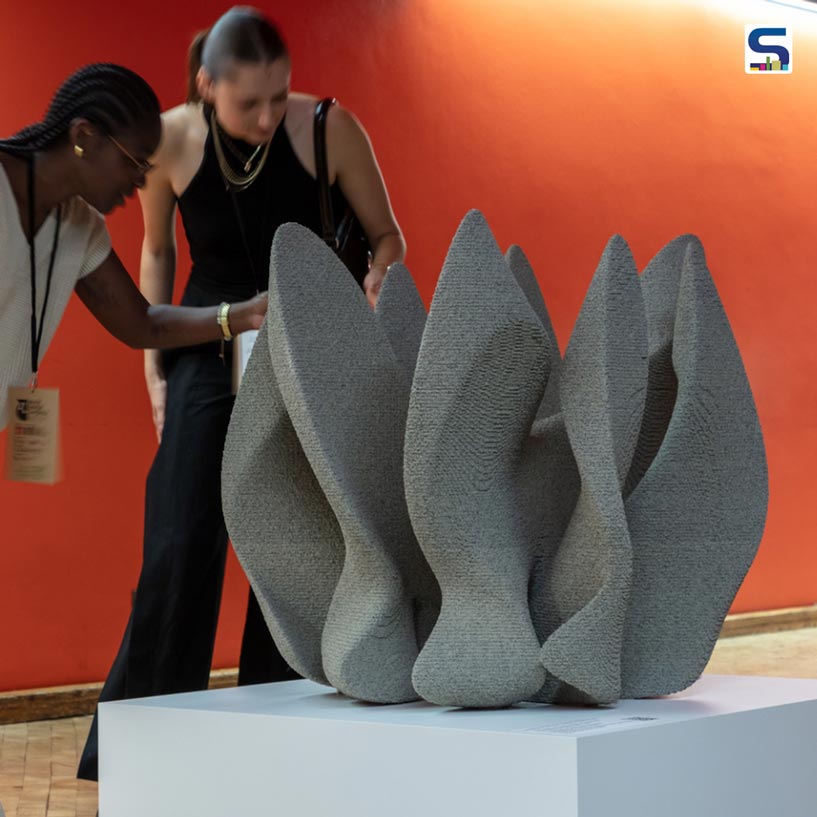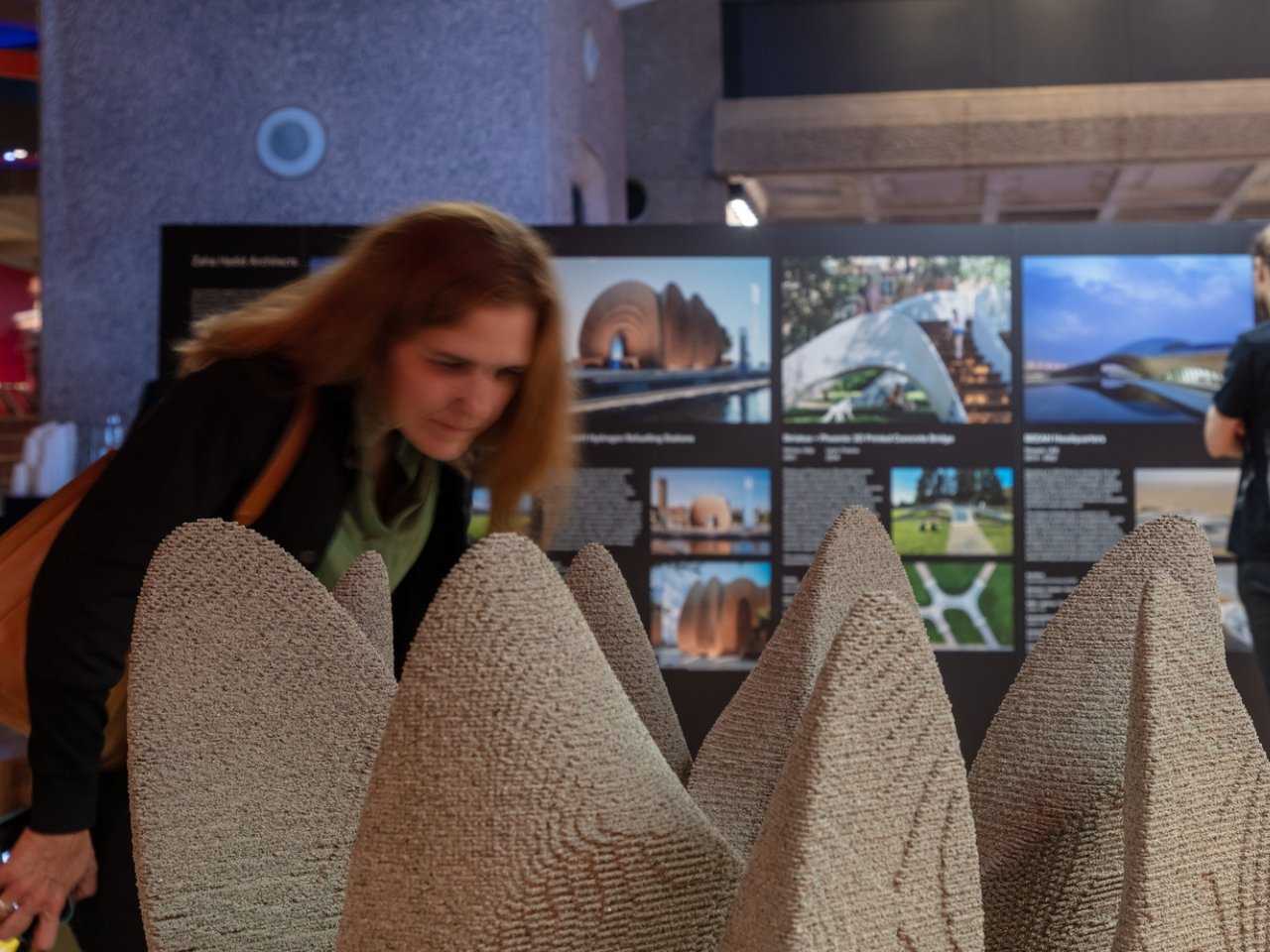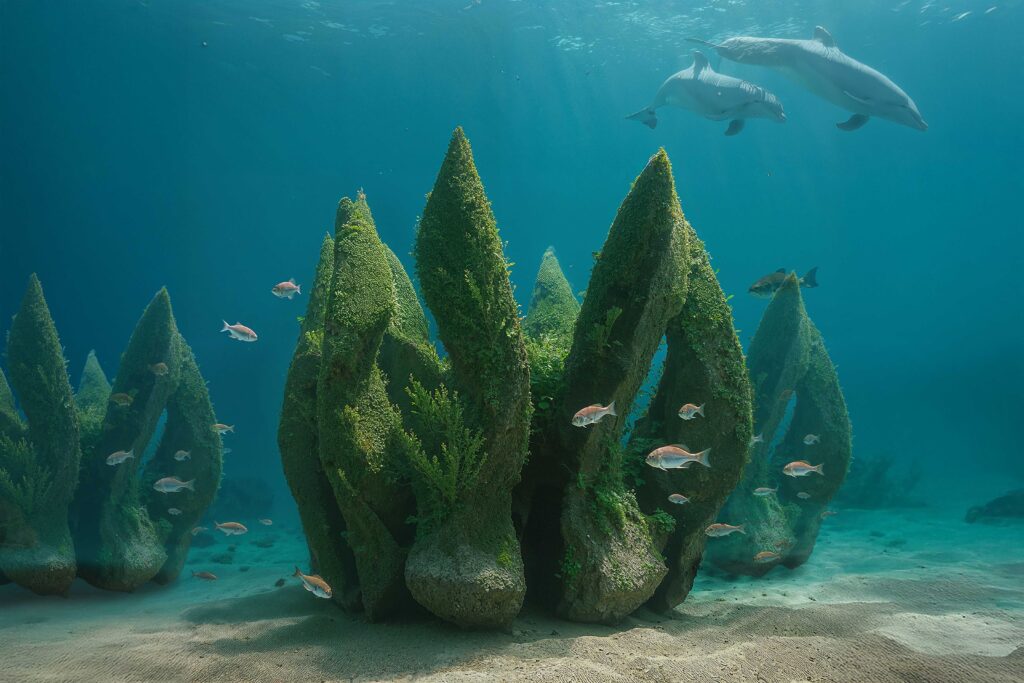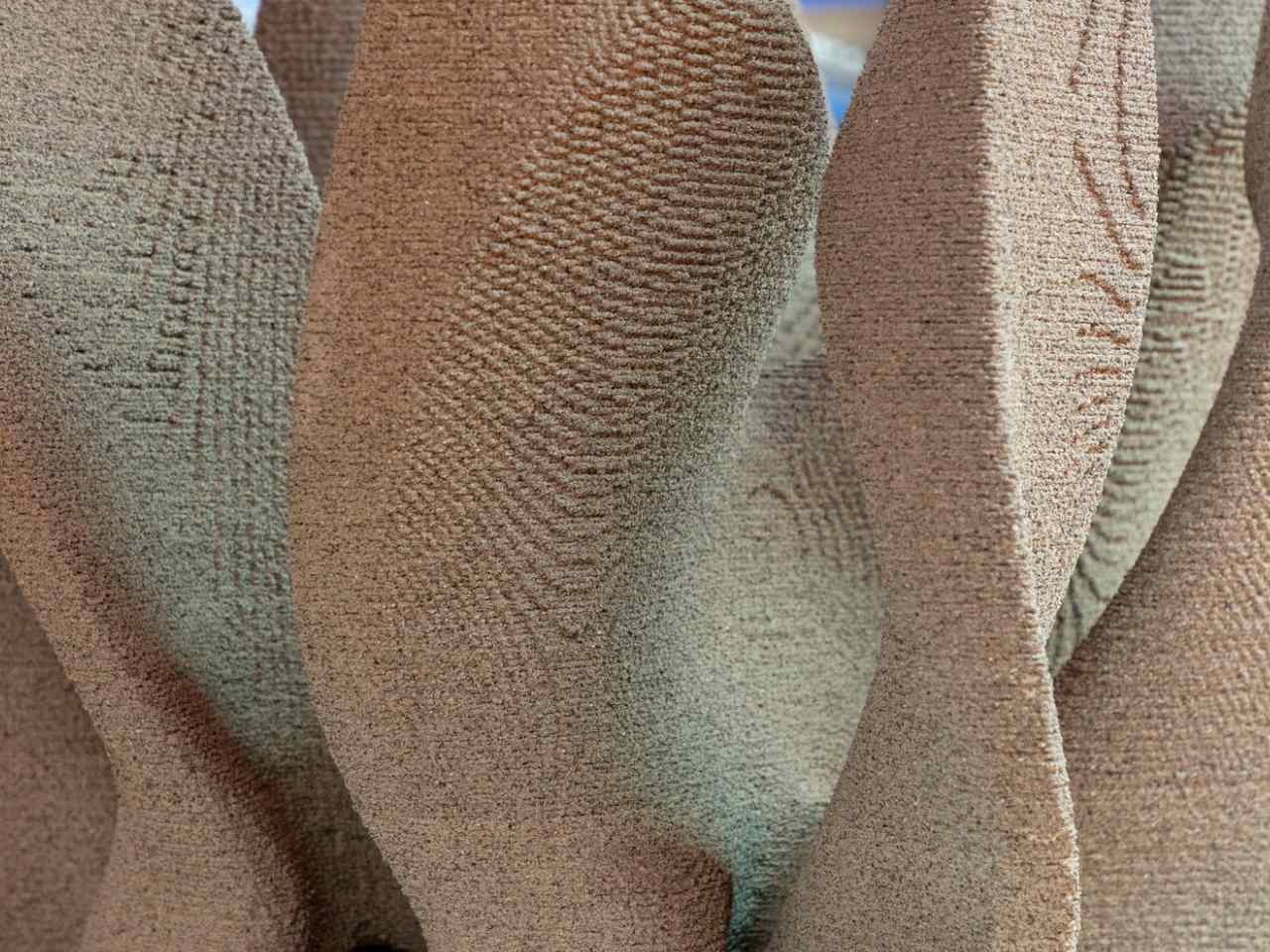
Zaha Hadid Architects (ZHA) has translated its signature language of fluid, organic forms into a bold ecological intervention for Hong Kong’s fragile coastal waters. The project, named Nereid, is a digitally fabricated marine habitat that demonstrates how design and advanced technology can directly contribute to biodiversity conservation. Conceived for the North Lantau Marine Park, the habitat is specifically designed to support endangered marine species, including the Chinese White Dolphin, which is native to the region. Read more on SURFACES REPORTER (SR) to understand how design can restore balance between human innovation and natural systems, and how architecture can extend far beyond buildings into the preservation of life.

At the heart of Nereid lies a reef-like structure fabricated using large-scale 3D printing technology.
Architecture for biodiversity
The initiative is the result of a partnership between ZHA, the Hong Kong Science and Technology Parks Corporation, and local marine scientists, combining architectural expertise with ecological research. The first prototype was unveiled at the World Design Congress in London earlier this year, drawing international attention for its innovative approach to marine restoration.
At the heart of Nereid lies a reef-like structure fabricated using large-scale 3D printing technology. Unlike conventional artificial reefs, which are often created from sunken ships or concrete blocks, Nereid is made with a marine-grade, pH-neutral material. This choice of material is critical, as it fosters the settlement of algae, shellfish and other organisms that form the foundation of a thriving marine food chain. By establishing a base for phytoplankton and filter-feeding species, the structure sets in motion the ecological processes necessary to attract and sustain higher-level marine life.

By establishing a base for phytoplankton and filter-feeding species, the structure sets in motion the ecological processes necessary to attract and sustain higher-level marine life.
What makes Nereid stand out is its precision engineering. Additive manufacturing has allowed ZHA to design highly detailed internal cavities and textured surfaces that closely replicate the complexity of natural coral. These microhabitats provide shelter, breeding grounds and protection for fish, invertebrates and other marine organisms. Beyond its ecological role, the structure also acts as a barrier against destructive bottom-trawling practices, which scrape the seabed and devastate entire ecosystems.

Additive manufacturing has allowed ZHA to design highly detailed internal cavities and textured surfaces that closely replicate the complexity of natural coral.
From buildings to oceans
For ZHA, this project represents more than just a scientific collaboration; it is a demonstration of how architecture can operate as an environmental tool. The first installation of the Nereid prototype will reportedly take place soon within the conservation zone of North Lantau Marine Park. Once deployed, researchers expect it to encourage the growth of plankton and other organisms that form the food base for dolphins and other marine species. The long-term hope is that these structures will replenish fish populations, improve water quality and ultimately support the recovery of the critically endangered pink dolphin population.
Equally significant is the symbolic impact of ZHA’s involvement. Known worldwide for its futuristic cultural institutions and skyscrapers, the firm’s foray into marine habitats signals a new direction in architectural practice, one that is explicitly tied to ecological resilience.
Image credit: Zaha Hadid Architects